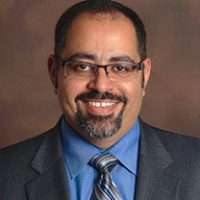 By Dr. Ehab Hanna, CMIO at Universal Health Services, Inc.
By Dr. Ehab Hanna, CMIO at Universal Health Services, Inc.
Twitter: @NuanceHealth
Trust between patients and their doctors is central to better care; however, strong relationships between clinical and IT teams are also key. Support staff who do not have good relationships with their medical colleagues will face challenges with new implementations and technical adoption. Applying some simple Art of Medicine principles can help build trust between these teams.
Healthcare has always been a profession deeply rooted in trust. Patients must trust their doctors, doctors must trust their colleagues’ advice and second opinions and, unsurprisingly, the new 2015 National Healthcare Trust Index found that trust plays a leading role for patients when choosing a hospital, healthcare facility, and health plans.
But that isn’t the only place where trust is critical. It must also exist between clinicians, their support staff, and their tools. Most of us are frustrated when we’re out somewhere and can’t load a page on our smartphones or our connection cuts out—now imagine the impact of that same experience for a physician who is mid-sentence with a patient and trying to pull up a chart.
As the Chief Medical Information Officer (CMIO) at Universal Health Services, it is my job to ensure that our medical staff has the technology they need to provide the best care to their patients. Whether they see patients in a single clinic or the many clinicians working across 235 health facilities, our technology must support the individual workflows and preferences of those diverse clinical care teams. But adoption of health IT can be complicated, especially as consumer technologies become more robust every day. Unreliable health IT solutions can not only negatively impact organizational workflows, they can erode trust between medical teams and IT support staff. Over the years, our organization has built a culture of trust amongst the various clinical and IT teams by applying the same principles one uses to practice the art of medicine.
Listen to your medical staff.
You would never write a prescription for a patient without speaking with him first, and the same rule applies to health IT investments. Talk with clinical teams, medical staff, and specialty groups to determine specific challenges and preferences to ensure the technology is meeting their requirements. For instance, our medical teams are incredibly mobile, so we look for cloud-based solutions and clinical documentation tools that accommodate different form factors to support the physician when she is using her smart phone, laptop, or tablet.
Diagnose frustrations and workflow breakdowns.
In healthcare, information pathways are nebulous, and one error can have a domino effect on other areas of the system. Look at the information flow, different throughputs, and different information pathways—who needs what information. Before conducting a broader implementation, conduct a pilot study to validate that the solution is the proper one for the team and that it works well with existing technologies. Form a team with delegates from each specialty group who are responsible for escalating any outstanding technological issues or frustrations.
Be available /on call.
Technical difficulties are extremely frustrating, especially when it is a challenge to get assistance. Prompt and efficient, 24/7 IT support is essential and experienced physician champions and technical support build trust and can bump adoption of new technology from mediocre to outstanding. When we first rolled out our cloud-based clinical documentation solution, we had a target goal of 30 percent—but within weeks we had voluntary adoption rates ranging from 60 to 90 percent across our hospitals. These numbers were because we had a good tool and an IT team that was on-hand and ready to assist our medical staff and answer questions. In my experience, high adoption rates require a combination of the right solution and a good support team.
Strong vendor relationships are critical when it comes to supporting a wide-range of health IT solutions, so make sure your people and partners are reliable. Nowhere is trust and reliability more important than in the healthcare environment, and strong relationships between clinical and IT teams are essential to achieving better outcomes. We all joined healthcare for one purpose – to help patients – and we all play an important role in reaching that goal, and our technology should always support us in that endeavor.
This article was originally published on Nuance and is republished here with permission.
